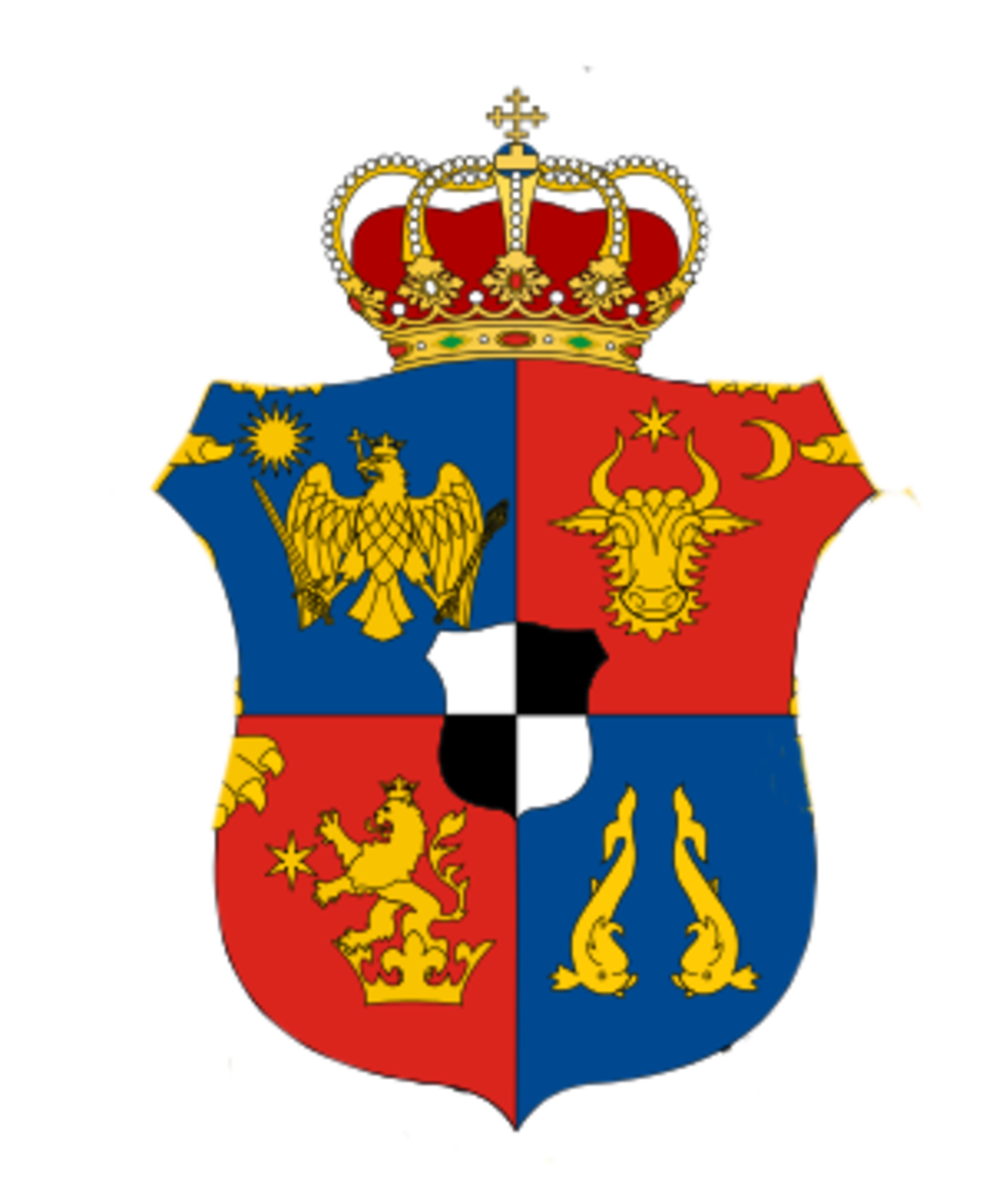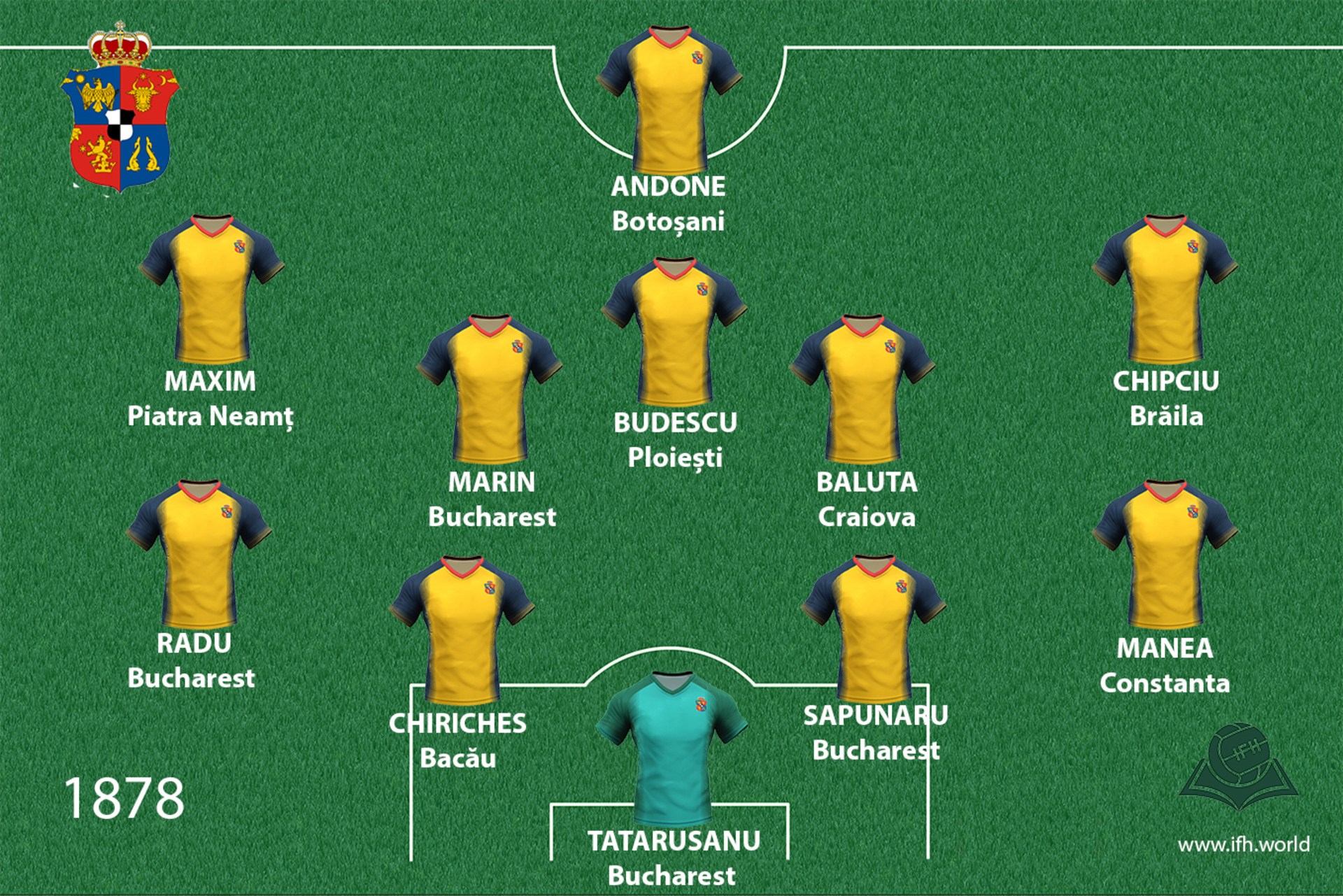Principality of Romania
Romania was created in the second half of the 19th century with the liberation of the principalities of Moldavia and Wallachia from Ottoman rule and their political and territorial unification.

Coat of arms

Shirt
| Position | First name | Last name | Mjesto rođenja | Like | Dislike | |
|---|---|---|---|---|---|---|
| GK | Ciprian | TATARUSANU | Bucharest |
21 |
7 |
|
| GK | Costel | PANTILIMON | Bacău |
1 |
0 |
|
| GK | Silvio | LUNG JR. | Craiova |
7 |
2 |
|
| DC | Ionut | NEDELCEARU | Bucharest |
7 |
2 |
|
| DC | Vlad | CHIRICHES | Bacău |
5 |
3 |
|
| DRC | Christian | SAPUNARU | Bucharest |
7 |
1 |
|
| DLC | Stefan | RADU | Bucharest |
21 |
6 |
|
| DRL | Alexandru | MATEL | Constanța |
1 |
0 |
|
| DRL | Crisitian | MANEA | Constanța |
1 |
0 |
|
| DL | Steliano | FILIP | Buzău |
7 |
5 |
|
| DL/ML | Bogdan | VATAJELU | Ostroveni |
7 |
1 |
|
| DC/DMC | Bogdan | TIRU | Constanța |
1 |
1 |
|
| DC/DMC | Valerica | GAMAN | Băilești |
9 |
1 |
|
| DMC | Tudor | BALUTA | Craiova |
1 |
0 |
|
| DMC/DR | Andrei | PREPELITA | Slatina |
7 |
1 |
|
| MC | Mihai | PINTILII | Iași |
1 |
0 |
|
| MRC | Razvan | MARIN | Bucharest |
13 |
0 |
|
| MLC | Christian | TANASE | Piteşti |
12 |
3 |
|
| AMC | Alexandru | MAXIM | Piatra Neamț |
1 |
0 |
|
| AMC | Florentin | MATEI | Bolintin-Vale |
6 |
2 |
|
| AMRLC | Aleksandru | BALUTA | Craiova |
12 |
0 |
|
| AMRL | Aleksandru | CHIPCIU | Brăila |
15 |
1 |
|
| AMRL/FC | Florin | TANASE | Găești |
9 |
4 |
|
| SS/FC | Constantnin | BUDESCU | Ploiești |
16 |
0 |
|
| FRLC | Andrei | IVAN | Moreni |
6 |
4 |
|
| FRLC | Bogadan | STANCU | Pitești |
9 |
3 |
|
| FRLC | Denis | ALIBEC | Mangalia |
12 |
2 |
|
| FRLC | Raul | RUSESCU | Râmnicu Vâlcea |
12 |
3 |
|
| FC | Florin | ANDONE | Botoșani |
1 |
0 |
(Today part of Romania (Wallachia, Moldavia, Dobruja)
In the beginning of the 19th century, Russia took Bessarabia from the Ottomans and encouraged resistance movements in Wallachia and Moldavia. They eventually happened in the form of the pan Balkan orthodox Eteria movement and Vladimirescu’s independence movement (1821). Despite the fact that the Ottomans managed to suppress the rebellions due to disputes between these groups, the principalities soon became Russian protectorates and continued to stage more or less successful rebellions. The society was divided into the rulers (hospodari) under Russian patronage and subjects: the citizen class mostly consisted of Greeks, Armenians and Jews. Along with Russia, who aspired to control the Black Sea and tried to open the way to Istanbul and the straits, establishment of independent Wallachia and Moldavia was attractive to Great Britain since they would, apart from grain exports, be useful as a buffer between Russia, the Habsburg Monarchy and the Ottoman Empire, as well as between Russia and the Dardanelles.
Therefore, in the context of the Eastern question, Moldavia and Wallachia united (1859), with a common prince, as the principality of Romania. The name for the people and the country (Român – Romanian) is the consequence of the romantic theory about the Roman origin of the Wallachians and Moldavians, who spoke a Romance language. This theory arose with the influence of the renaissance in the 16th century, when intellectuals showed greater interest in the ancient world. The formal suzerainty of the sultan would remain until the Berlin Congress (1878), when Romania gained complete independence. Despite the fact that they are often classified as Balkanic, Romanians steadfastly refuse such a classification, considering themselves to be the advance guard of Latinity and civilization in a sea of Turkish and Slavic barbarians.
Sources
- Darko DUKOVSKI, Povijest Srednje i Jugoistočne Europe 19. i 20. stoljeća , SV.I., Zagreb, 2005.
- Felipe FERNANDEZ-ARMESTO, Narodi Europe, Zagreb, 1997.
- Grupa autora, Povijest: Napoleon, restauracija i revolucionarna kretanja (1800 – 1848), knjiga XIII., Zagreb 2008.
- Katarina LUKETIĆ, Balkan: od geografije do fantazije, Zagreb, 2013.
- Vasilj POPOVIĆ, Istočno pitanje , Sarajevo, 1956.
- Marija TODOROVA, Imaginarni Balkan, Beograd, 2006.
- Emblem: https://en.wikipedia.org/wiki/List_of_Romanian_coats_of_arms
